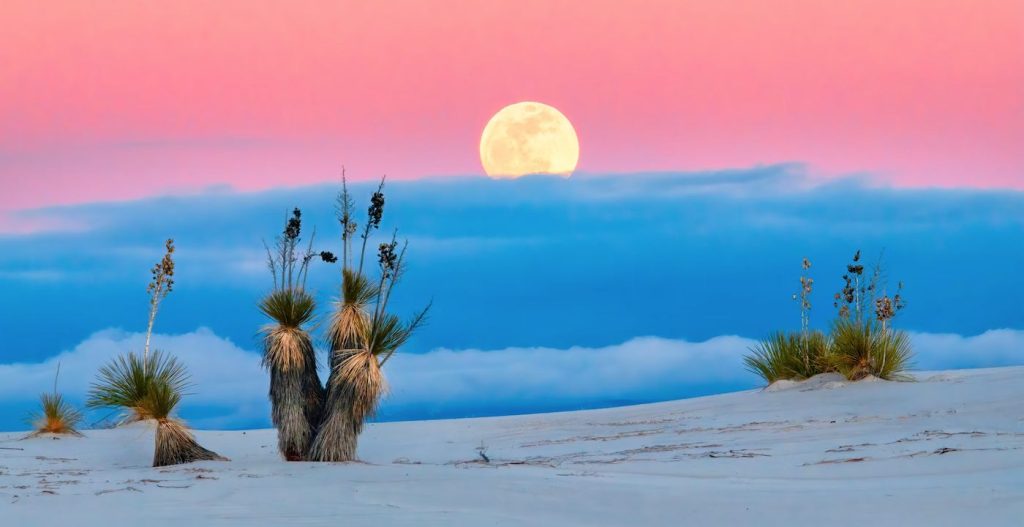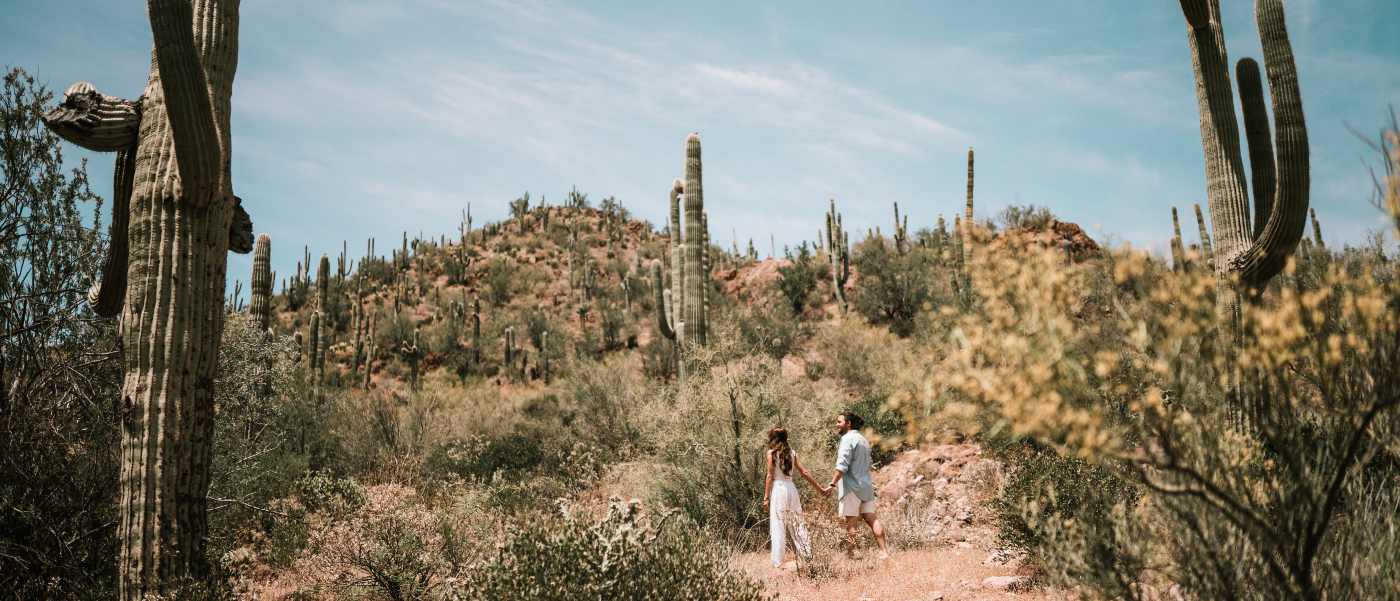Desert dwellers know it well: the smell of rain and the feeling of euphoria that comes when a storm washes over the parched earth.
That feeling, and the health benefits that come with it, may be the result of oils and other chemicals released by desert plants after a good soaking, new research suggests.
“The Sonoran Desert flora is one of the richest in the world in plants that emit fragrant volatile oils, and many of those fragrances confer stress-reducing health benefits to humans, wildlife and the plants themselves,” said Gary Nabhan, a research social scientist at the UArizona Southwest Center and the Kellogg Endowed Chair in Southwestern Borderlands Food and Water Security.
Nabhan is lead author of two new studies that explain how volatile organic compounds that evolved to protect plants from damaging solar radiation, heat waves, drought stress, and predatory animals may also have health benefits for humans.
A familiar fragrance
Nabhan was inspired to investigate the health benefits of desert fragrances after learning about “forest bathing,” an ancient practice that originated in the coniferous forests of eastern Asia and involves spending time in nature to help reduce stress and improve overall well-being.
At first, Nabhan was disappointed by the fact that the nearest forests to him are thousands of feet high in the Catalina Mountains, which reach their highest point about an hour-and-a-half drive from central Tucson.
“But then I thought, some of those same compounds are found in desert plants,” Nabhan said, “and we know we have tremendous fragrances at certain times of the year, especially right after the thunderstorms of the monsoon.”
MORE: Remove the Sickly Houseplants From Your Home or Office – They’re Making You Sad
The Southwest monsoon season typically runs from June 15 to Sept. 30. About half of the region’s average annual rainfall occurs over the course of those three-and-a-half months.
Nabhan and his collaborators—Eric Daugherty, a former intern at the Southwest Center, and Tammi Hartung, a co-owner of Desert Canyon Farm in Canyon City, Colorado— identified 115 volatile organic compounds in 60 species of plants in the Sonoran Desert that are released immediately before, during and after rain. Of these, 15 have been shown in past studies to offer tangible health benefits.
“The fragrant volatile organic compounds from desert plants may in many ways contribute to improving sleep patterns, stabilizing emotional hormones, enhancing digestion, heightening mental clarity and reducing depression or anxiety,” Nabhan said.
“Their accumulation in the atmosphere immediately above desert vegetation is what causes the smell of rain that many people report. It also reduces exposure to damaging solar radiation in ways that protect the desert plants themselves, the wildlife that use them as food and shelter, and the humans who dwell among them.”
Many desert plants produce more volatile oils during the summer to protect themselves from harsh conditions, Nabhan said.
CHECK OUT: This Plant From a Single Seed is Now 77 Sq-Miles Wide and World’s Largest
“The production of the oily compounds is happening during the extreme droughts and severe heat waves, but they remain on the leaves until we get the onset of the summer rains,” Nabhan said.
“We used to think that during the summer rains, those oily and gummy substances were washed off and into the air, but now there’s some evidence that with humidity and the fierce winds that we get with the onset of the rain, they’re released into the atmosphere even before the rain actually falls and contribute to that incredible surge of anticipation that you feel right before the first raindrop of a thunderstorm. From there, they travel into our lungs and into our bloodstream within minutes.”
The creosote bush is one of the most iconic plants in the Sonoran Desert and is often cited as the plant that gives the desert its familiar smell when it rains. One of the healing compounds that contributes to creosote’s familiar smell is trans-caryophyllene, which actually comes from a fungus that lives inside the plant rather the plant itself, Nabhan said.
Fragrance gardens for healing

Armed with his knowledge of desert plants, Nabhan is part of an initiative to create fragrance gardens to promote healing and well-being around the Southwest.
In March, Nabhan and his colleagues installed one such garden at the Sonoran Desert Inn and Conference Center in Ajo, Arizona. By late fall, they’d like to complete another at the base of Tumamoc Hill, where many people go to exercise outdoors. The hill’s proximity to Carondelet St. Mary’s Hospital makes it an even more strategic location, said Nabhan, who envisions patients and their families reaping the health benefits of the garden.
“I would like to see these fragrance gardens around every hospital, community clinic and bed and breakfast—wherever anyone comes to heal, relax and recreate,” Nabhan said. “These public gardens will not only produce nutritious foods, but offer residents, out-of-town guests and hikers a powerful opportunity to sense how the desert smells like rain.”
40th anniversary of Nabhan’s book “The Desert Smells Like Rain”
This summer, Nabhan is celebrating four decades since the release of his book The Desert Smells Like Rain: A Naturalist in O’odham Country. A 40th anniversary edition of the book includes a new preface from Nabhan with thanks to the Tohono O’odham people who shared with him their traditional knowledge that offered valuable insights into climate change and biodiversity.
The book explores how to respect nature and talks about what “transplants” to the desert— like Nabhan himself, who moved to Arizona in 1972 after spending his childhood in Indiana—can learn from the Tohono O’odham people, as longtime residents of the Sonoran Desert.
“These papers and the re-release of the book brought me full circle, returning me to a pivotal moment in my life when I first came to the desert,” Nabhan said.
LOOK: Millions of Tons of Earth Dug for New London Subway Line Became a New Bird Sanctuary
Early in his career, Nabhan worked part time with a program called Arizona Writers on the Road, which gave him the opportunity to teach writing to young students on the Tohono O’odham reservation. As part of an assignment one day, he asked the students what the desert smelled like to them.
“One 8-year-old boy said that the desert smells like rain, and I thought that was the most beautiful thing I’ve ever heard. That became the title of my first book, and I’m not only so grateful to that child, but I’m also grateful to the O’odham communities I worked with later, because they taught me more about the desert than I could ever teach them as a scientist,” Nabhan said. “So, to me, ‘the desert smells like rain’ is an expression of gratitude to a community.”
The two studies, with Nabhan as lead author, are in the International Journal of Environmental Research and Public Health and the other in Desert Plants, a botanical journal published by the Boyce Thompson Arboretum near Superior, Arizona.
SHARE Memories of Desert Aromas With Friends; Share This Story…




















